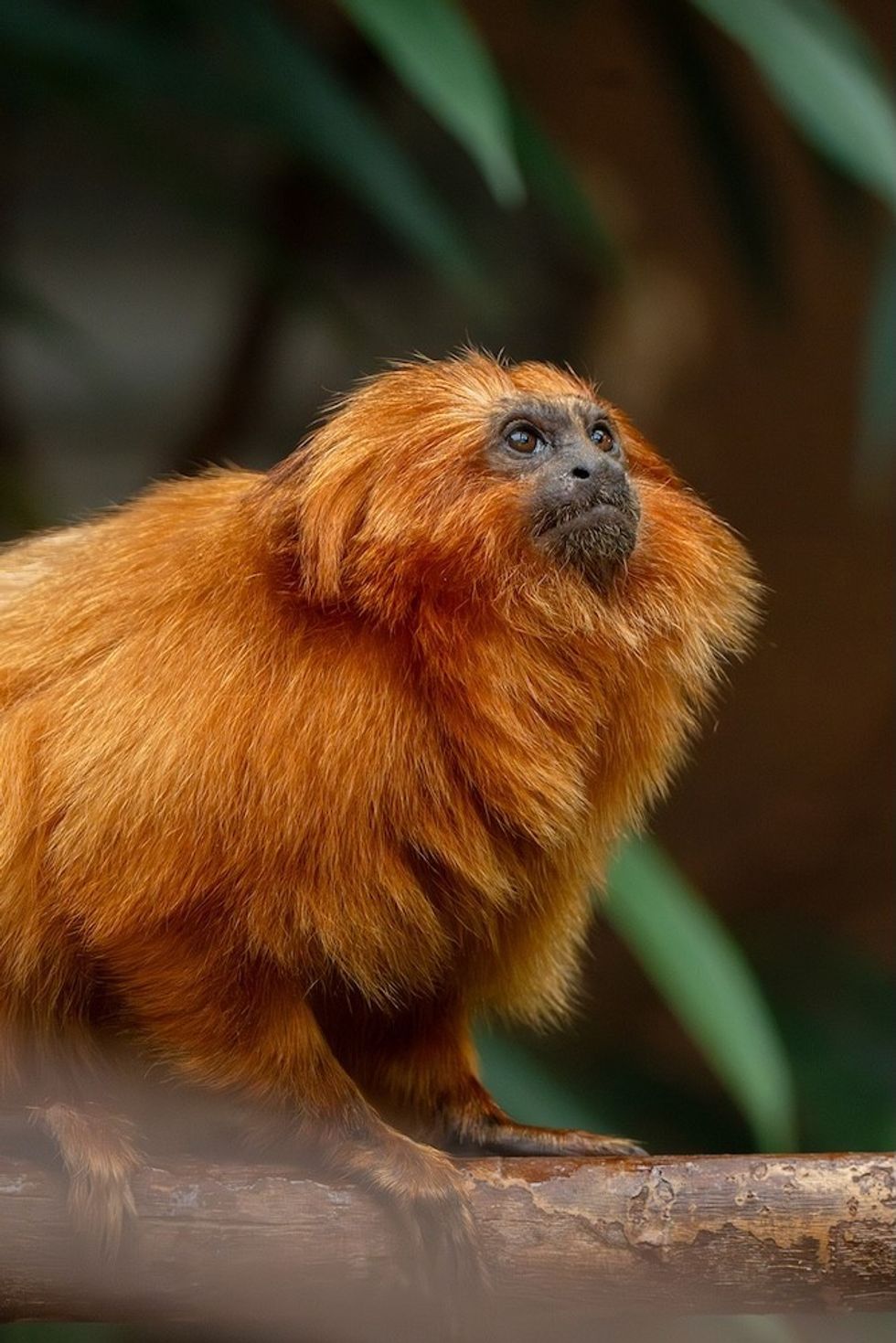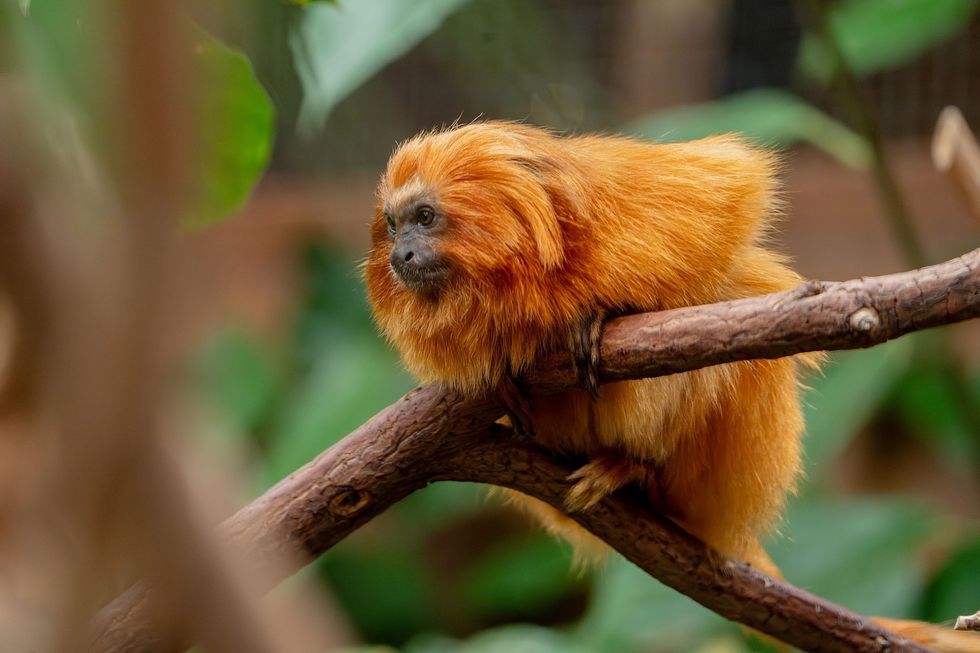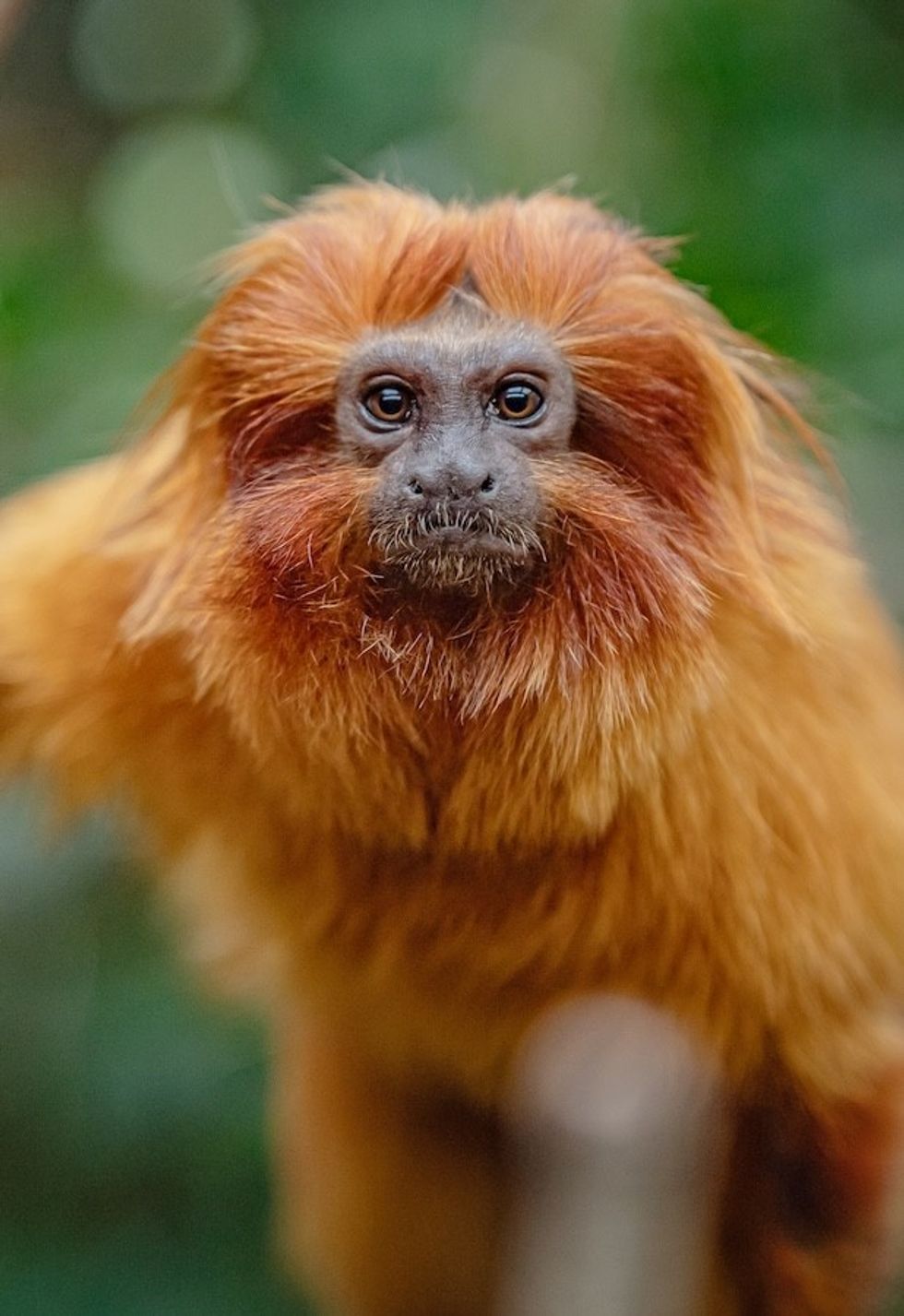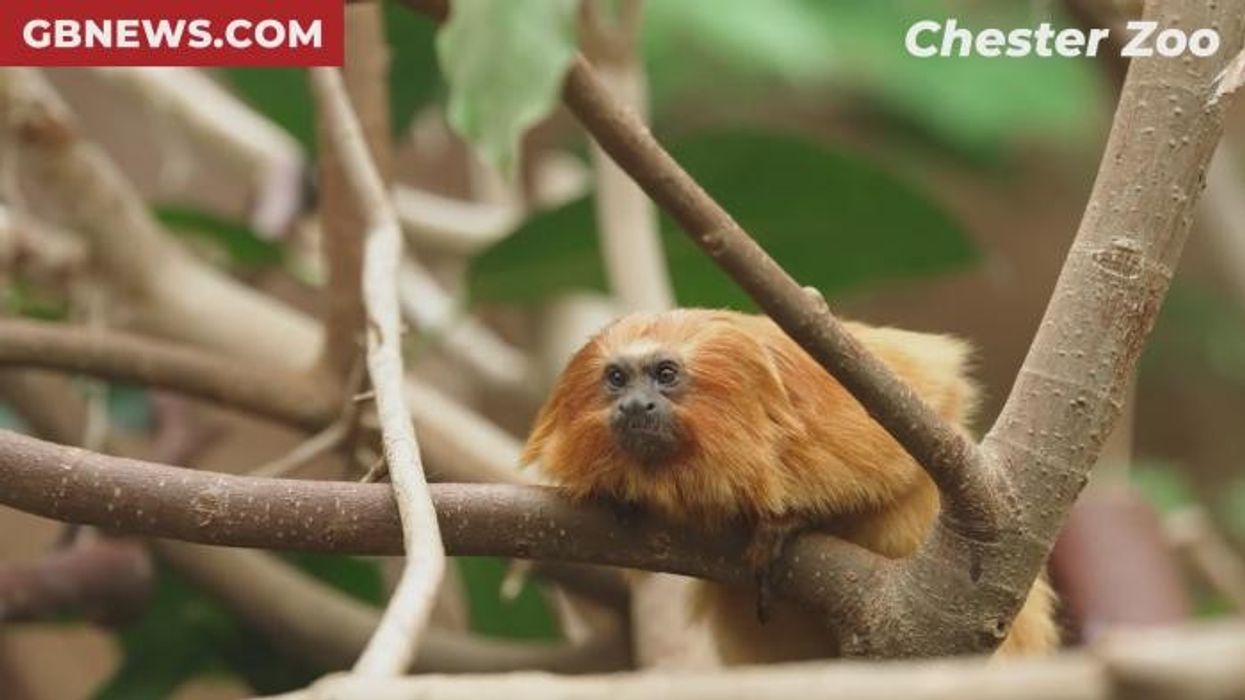Chester Zoo welcomes two 'must-see' rare monkeys hailing from over 5,500 miles away

Conservation breeding programmes have successfully prevented their extinction
Don't Miss
Most Read
Trending on GB News
Chester Zoo has welcomed its first-ever golden lion tamarins, a pair of endangered primates that measure just eight inches in height.
The diminutive monkeys, seven-year-old George and 12-year-old Leaf, have been filmed investigating their new surroundings.
These vibrant orange primates sport distinctive mane-like fur encircling their heads, which inspired their name.
**ARE YOU READING THIS ON OUR APP? DOWNLOAD NOW FOR THE BEST GB NEWS EXPERIENCE**
The duo now shares their habitat with various other rare primate species at the 128-acre conservation facility in Chester.
The species originates from Rio de Janeiro's forests, where their population dwindled to just several hundred individuals before conservation initiatives intervened.
Listed as endangered by the IUCN Red List, these primates have suffered from habitat destruction caused by construction projects, agricultural expansion for livestock, and timber harvesting.
Their striking appearance features brilliant golden-orange fur that gives them their distinctive colouration.
Conservation breeding programmes have successfully prevented their extinction, transforming the species into what zoo specialists describe as a global conservation triumph.
LATEST DEVELOPMENTS:

Chester Zoo has welcomed its first-ever golden lion tamarins
|CHESTER ZOO
Chester Zoo operates as a charitable organisation focused on preventing species extinction through education and conservation work.
The facility participates in over 140 international breeding programmes for animals facing extinction and collaborates with more than 100 partners across twenty countries.
Zoo representatives confirmed these tamarins represent essential additions for visitors to experience, particularly given the species' remarkable recovery from near-extinction.
The organisation reinvests all proceeds into conservation projects, supporting threatened wildlife globally whilst maintaining five national plant collections containing over 1,000 species.

The pair of endangered primates measures just eight inches in height
|CHESTER ZOO
James Star, Primate Keeper at Chester Zoo, said: "Leaf and George have moved in with the titi monkeys, pygmy marmosets, emperor tamarin and a goeldi monkey, and they all seem to be getting along brilliantly.
"Lion tamarins have elongated fingers and hands that allow them to forage for insects in tree crevices that are otherwise out of reach for the other species they live with, and we’ve already seen them using this kind of foraging behaviour.
"Despite their tiny stature, standing at the same size as a bottle of pop, their distinctive coats and charismatic behaviour make them easy to spot when they’re jumping from tree to tree in their new home.
"Golden lion tamarins are a major zoo conservation success story. There were once only a few hundred remaining in the wild.
"But a coordinated breed and release programme was initiated across conservation zoos around the globe, and the population quickly bounced back, helping to turn it around and bring them back from the brink."

Golden lion tamarins have been filmed investigating their new surroundings
|CHESTER ZOO
The tamarins play a vital role in the health of their native forest, consuming wild fruits and then passing seeds in their faeces as they travel through their range.
The seeds they spread effectively land within a packet of premade fertiliser, giving the young trees and other plants in the forest all the nutrition they need to grow.
Nick Davis, Mammals General Manager at Chester Zoo, said: "Golden lion tamarins are an iconic species with an important conservation story to tell, and it’s great to welcome this highly endangered species to Chester Zoo for the very first time. They really are a must-see for our visitors.
"Alongside the conservation breeding programme George and Leaf are part of for these precious primates, we are also supporting primate conservation work around the globe, protecting threatened forests and the species that depend on them, in South America, Madagascar and Southeast Asia."











